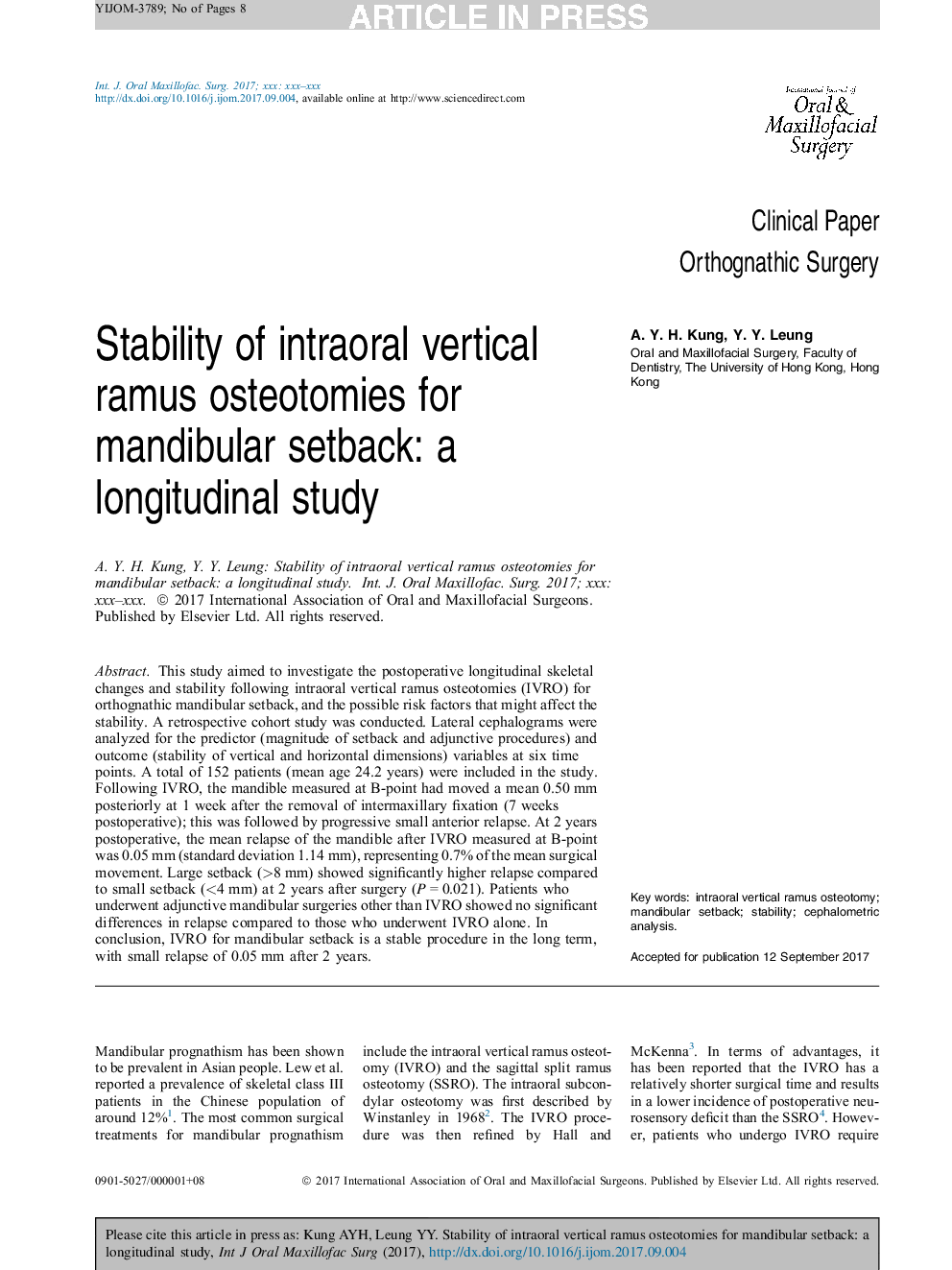| Article ID | Journal | Published Year | Pages | File Type |
|---|---|---|---|---|
| 8697877 | International Journal of Oral and Maxillofacial Surgery | 2018 | 8 Pages |
Abstract
This study aimed to investigate the postoperative longitudinal skeletal changes and stability following intraoral vertical ramus osteotomies (IVRO) for orthognathic mandibular setback, and the possible risk factors that might affect the stability. A retrospective cohort study was conducted. Lateral cephalograms were analyzed for the predictor (magnitude of setback and adjunctive procedures) and outcome (stability of vertical and horizontal dimensions) variables at six time points. A total of 152 patients (mean age 24.2 years) were included in the study. Following IVRO, the mandible measured at B-point had moved a mean 0.50Â mm posteriorly at 1 week after the removal of intermaxillary fixation (7 weeks postoperative); this was followed by progressive small anterior relapse. At 2 years postoperative, the mean relapse of the mandible after IVRO measured at B-point was 0.05Â mm (standard deviation 1.14Â mm), representing 0.7% of the mean surgical movement. Large setback (>8Â mm) showed significantly higher relapse compared to small setback (<4Â mm) at 2 years after surgery (PÂ =Â 0.021). Patients who underwent adjunctive mandibular surgeries other than IVRO showed no significant differences in relapse compared to those who underwent IVRO alone. In conclusion, IVRO for mandibular setback is a stable procedure in the long term, with small relapse of 0.05Â mm after 2 years.
Related Topics
Health Sciences
Medicine and Dentistry
Dentistry, Oral Surgery and Medicine
Authors
A.Y.H. Kung, Y.Y. Leung,
